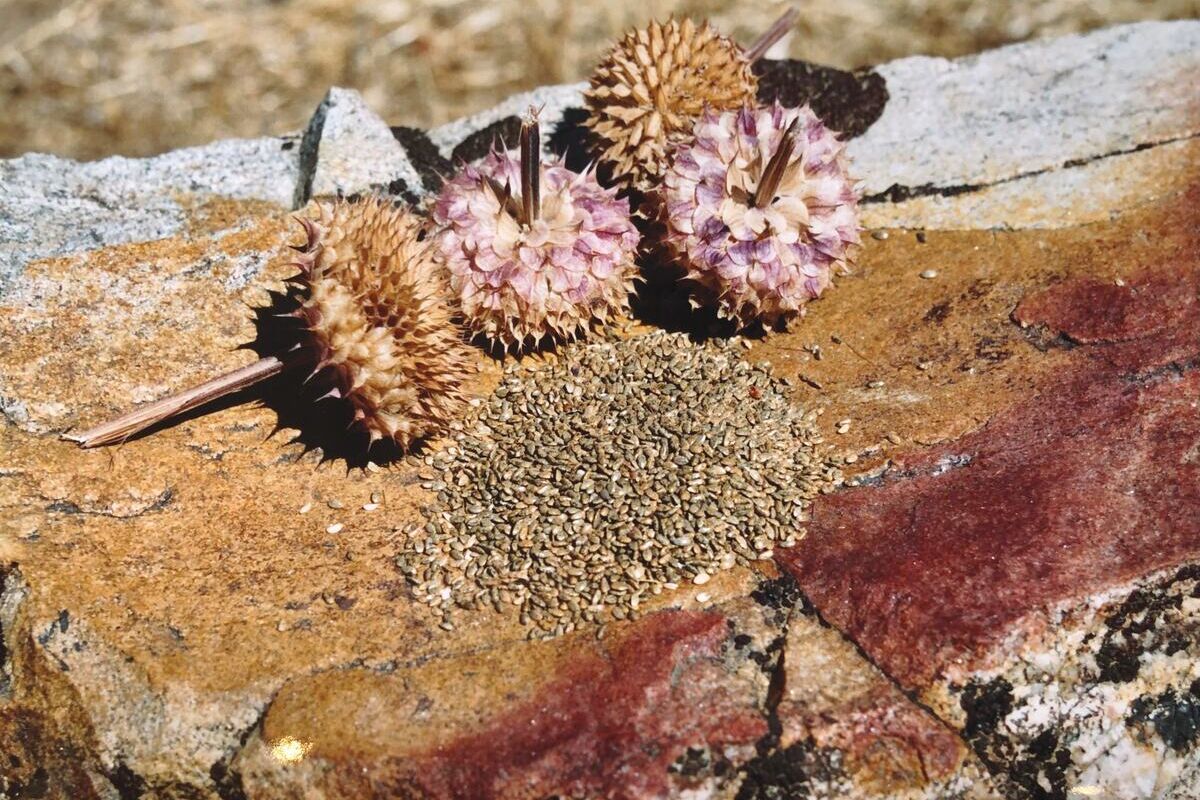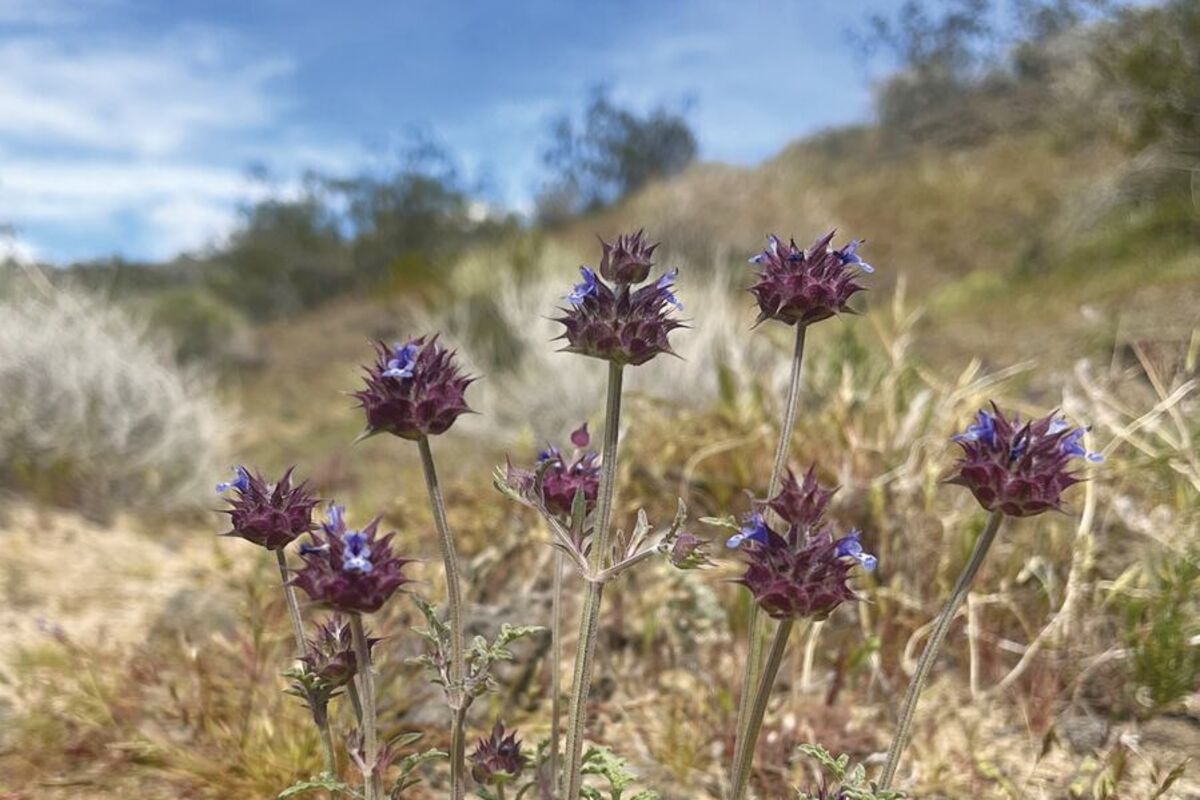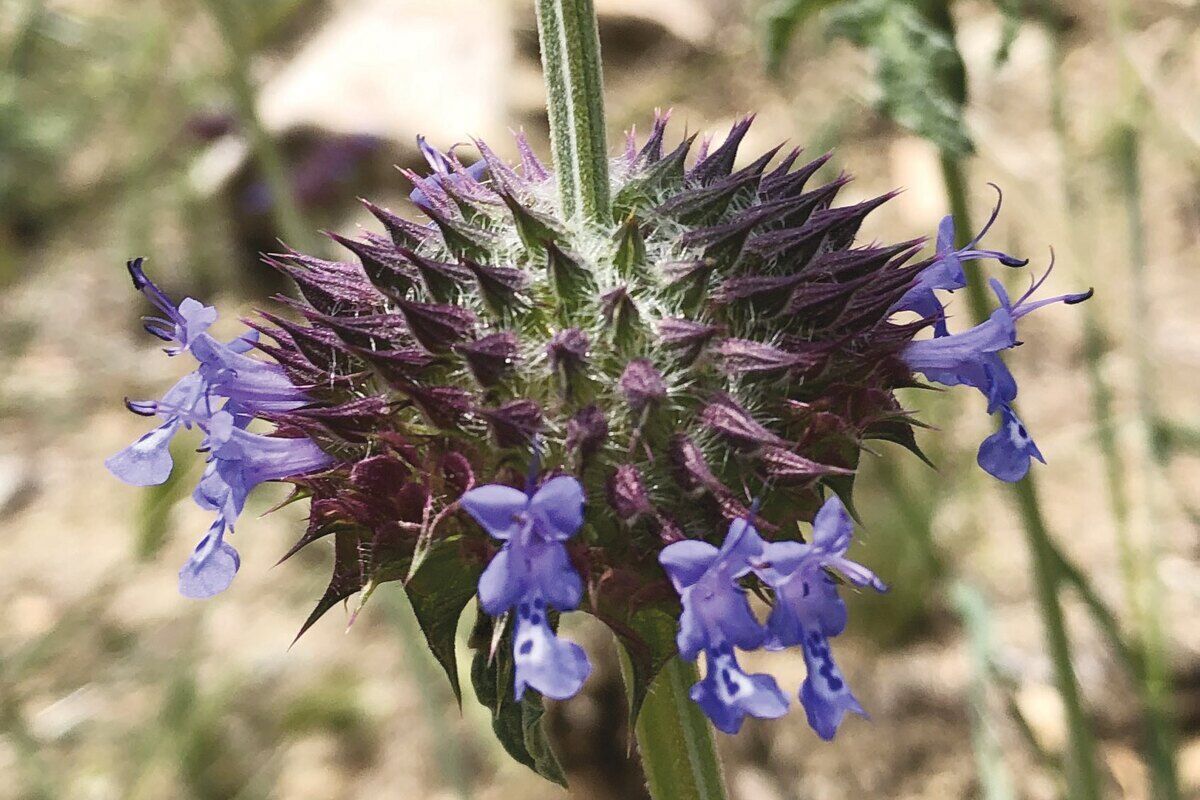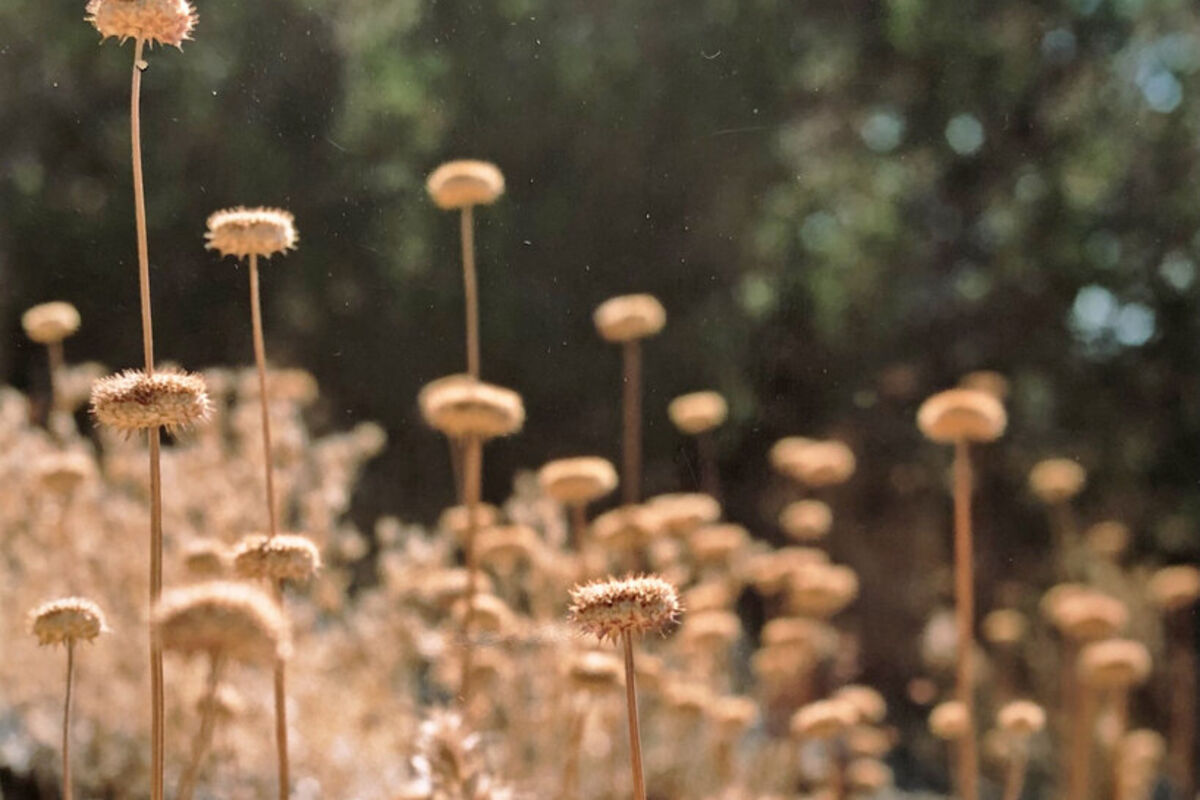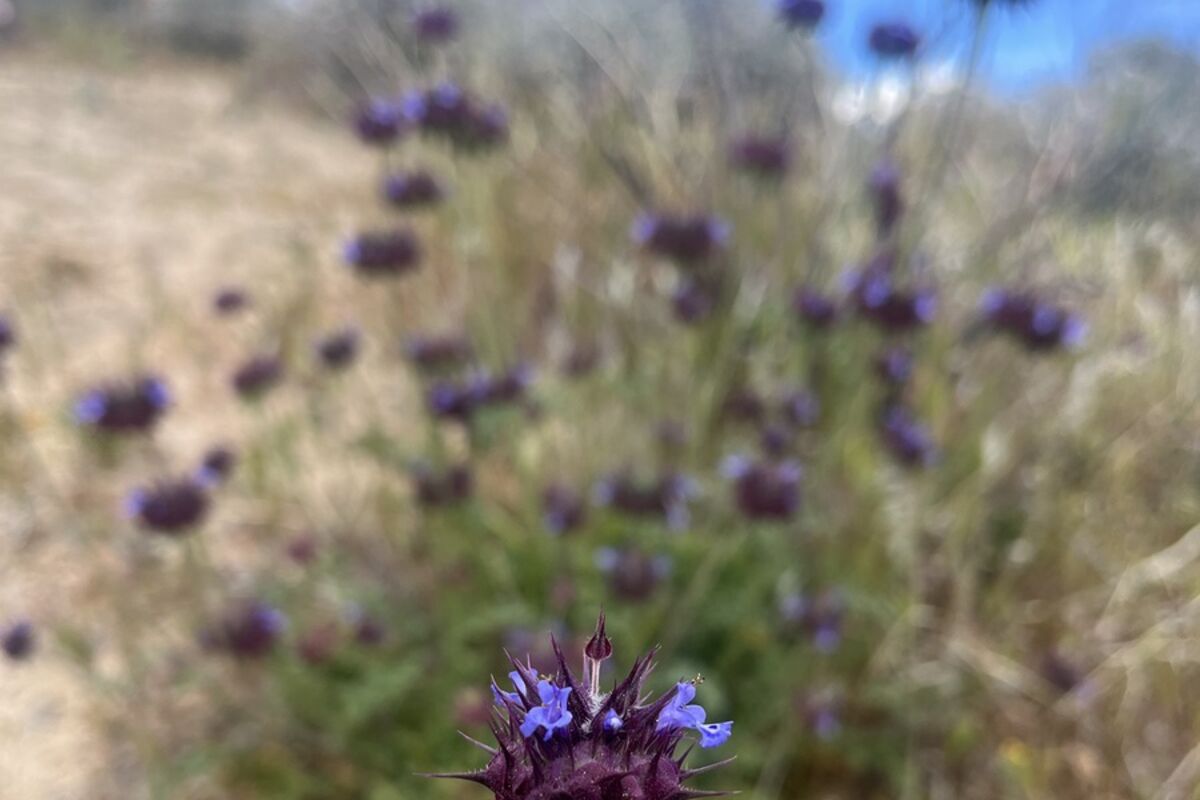Chia: a useful and unforgettable native plant
Land of Four Seasons
March 30, 2024
You never can tell from one year to the next which wildflowers will benefit most from that winter's combination of overall moisture, the timing of precipitation, air temperature, soil temperature, etc. One species that is doing very well this spring is remarkable plant known commonly as Chia.
Chia (Salvia columbariae) is an annual plant commonly found growing on sandy or rocky hillsides, roadcuts, and sunny chaparral slopes throughout the Kern County mountains.
Chia has a very distinctive appearance: from little clumps of light green foliage, a handful of widely-spaced bare stems arise, ranging in height from a few inches to over a foot tall in wetter years.
Each of the bare stems is topped with a purple pincushion, looking like a miniature short-spined sea urchin. These little spiky, flattened spheres have a handful of tiny cornflower blue flowers, tubular and lipped. In favorable years, there may be several flowerheads spread out on each stalk.
Chia is in the Salvia genus, so it is a true sage, and thus in the large Lamiaceae or mint family. This can clearly be seen in Chia's bare stems, which are noticeably square – a common identifying characteristic of plants in the mint family is square stems.
So the Chia plant is very distinctive-looking, but is there anything else special about it? Yes! I'm glad you asked, because the tiny gray or tan seeds produced inside the little purple pincushions are amazing in their own right.
Chia seeds are highly nutritious and easy to digest, and have been used as an important food source for many thousands of years. Several different species of Chia can be found in the Americas, and Chia was grown and cultivated by Indigenous peoples in Mexico and south to Honduras and Nicaragua. Chia was considered the third most valued food crop for Aztec or Nahuatl people, exceeded only by corn and beans.
Locally, Chia was highly prized by the Nuwä (Kawaiisu or Southern Paiute) people who knew it by the name pasidä, pronounced pah-SID-uh. Nuwä women would gather the seeds in July, when the plant has dried out.
They were gathered using a seedbeater, which looks like an oversized wooden spoon woven from willow. A seedbeater was held in one hand and used to knock dried seeds from the flowerheads into another basket.
You can also snap off a dried Chia flowerhead and turn it upside down, and the tiny seeds will dump right out. This is part of the plant's seed dispersal mechanism: when wind or a passing animal brushes against the stiff Chia stems, the seeds will be scattered over the soil to produce future generations of the plant.
After Nuwä women had gathered Chia seeds, they would roast them in a winnowing-parching tray, which is a large, tightly-woven slightly concave basket. Chia seeds would be placed in the basket along with a few hot coals, which were carefully stirred constantly to roast the seeds and avoid scorching the basket itself.
After this parching process, the Chia seeds were pounded in a pahaz (pah-hahz) or stone mortar, and then added to water to make a beverage or porridge-like gruel. I have made this traditional food and it has a mild, pleasant taste.
Nuwä people would also simply add raw Chia seeds to water to make a refreshing drink with a cucumber-like flavor. This practice has long been popular in Mexico, where Chia was often added to agua frescas drinks, and today you can choose from a huge array of bottled or canned drinks that contain Chia seeds.
Chia seeds have an unusual quality: each tiny seed is covered with a dry substance that is activated by water to become a gelatinous coating, holding water up to 12 times the weight of the seed itself. The purpose of this mucilaginous covering is to hold water long enough for the seeds to successfully germinate and sprout.
In the arid climates where Chia is found, water is in short supply and rains are sparse. To adapt to these conditions, Chia evolved its unique coating that retains water around each seed, so they can start growing in winter when the first rains arrive.
This makes the seeds sticky when they get wet, a quality which was first used in 1977 to create Chia pets, which are small novelty sculptures made of clay. When you wet the surface of the clay figurine and sprinkle Chia seeds over it, the seeds adhere and if kept sprinkled with water quickly start growing, creating a green fur or hair. Millions of Chia pets have now been sold, depicting animals, cartoon characters or even real people.
Nuwä people and other tribes also used Chia medicinally to remove dirt and particles from their eyes. If someone's eye had irritants, a few Chia seeds, whole or mashed, would be placed on the eye surface and the gelatin would pick up the particles so they could be wiped away.
Chia is an extraordinary native wildflower whose association with humans goes back many thousands of years. I'm glad that Chia plants in Kern County are having a good year. They can be enjoyed for multiple different reasons.
Keep enjoying the beauty of life in the Tehachapi Mountains.
Jon Hammond is a fourth generation Kern County resident who has photographed and written about the Tehachapi Mountains for 38 years. He lives on a farm his family started in 1921, and is a speaker of Nuwä, the Tehachapi Indian language. He can be reached at tehachapimtnlover@gmail.com.


